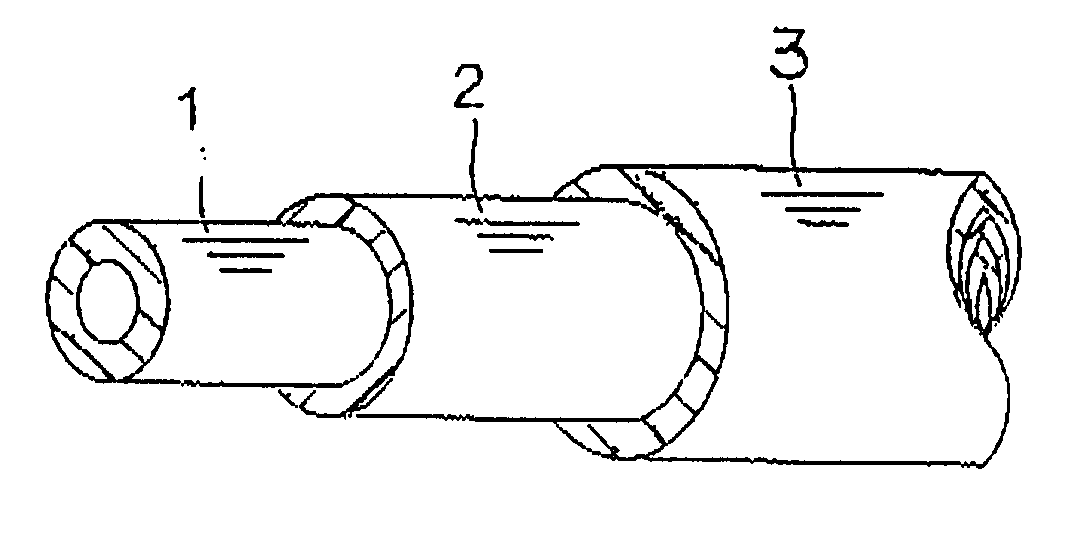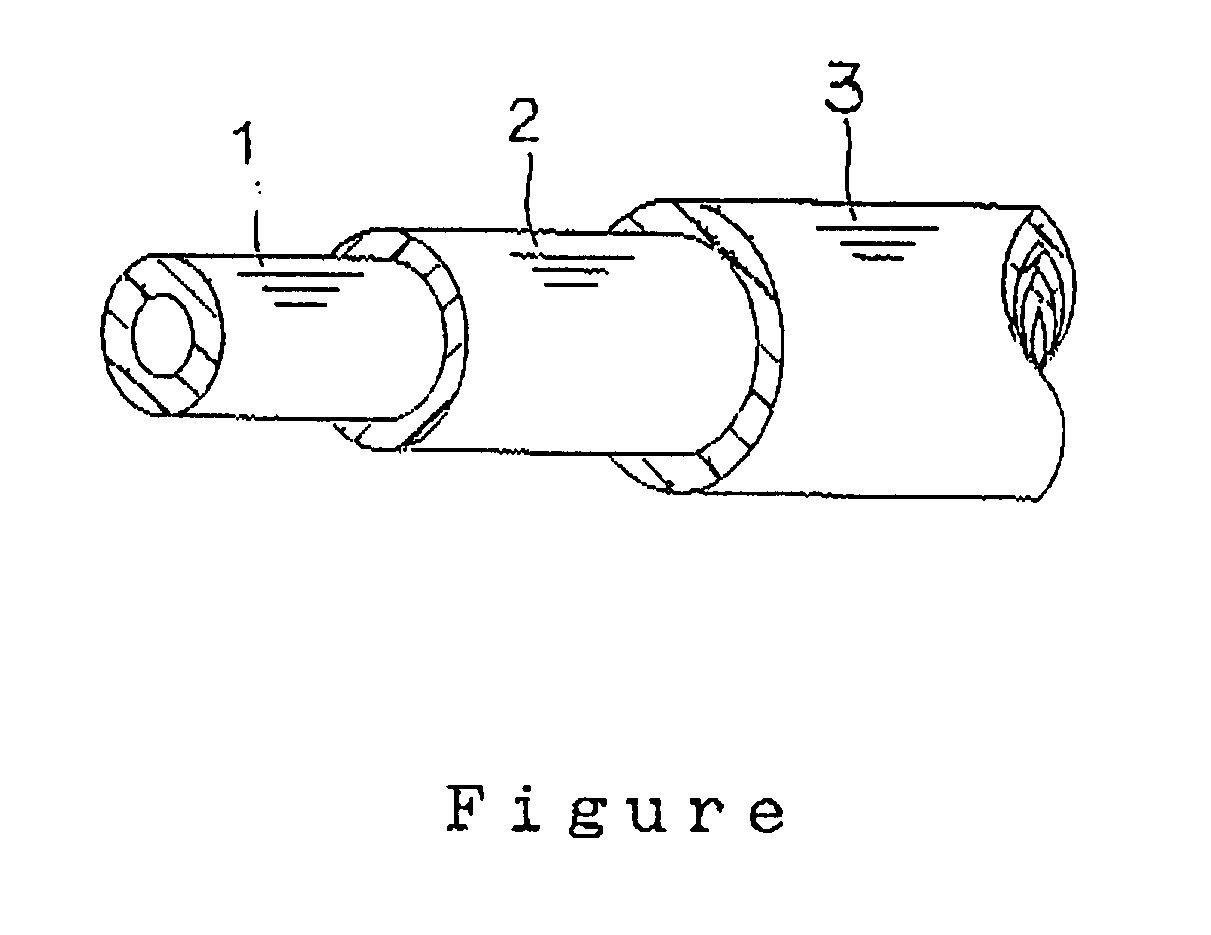Automotive fuel hose
a technology for automotives and fuel hoses, applied in the direction of liquid fuel feeders, machines/engines, applications, etc., can solve the problems of inferior sour gasoline resistance, inferior impact resistance of multi-layer fuel tubes, so as to reduce the crystallinity of pps resin, the effect of low fuel permeability and low fuel permeability
- Summary
- Abstract
- Description
- Claims
- Application Information
AI Technical Summary
Benefits of technology
Problems solved by technology
Method used
Image
Examples
example 1
[0085]Each extruder for an inner layer, a low fuel permeability layer and an outer layer was prepared, respectively. Each material was extruded by each extruder, and was combined in a die, and then passed through a sizing die for obtaining an automotive fuel hose having an inner layer, a low fuel permeability layer and an outer layer laminated successively in this order, and having an inner diameter of 6 mm and an outer diameter of 8 mm. Successively, the thus obtained hose was annealed at 130° C. for one hour by putting thereof into a thermally aging bath.
PUM
| Property | Measurement | Unit |
|---|---|---|
| outer diameter | aaaaa | aaaaa |
| outer diameter | aaaaa | aaaaa |
| outer diameter | aaaaa | aaaaa |
Abstract
Description
Claims
Application Information
 Login to View More
Login to View More - R&D
- Intellectual Property
- Life Sciences
- Materials
- Tech Scout
- Unparalleled Data Quality
- Higher Quality Content
- 60% Fewer Hallucinations
Browse by: Latest US Patents, China's latest patents, Technical Efficacy Thesaurus, Application Domain, Technology Topic, Popular Technical Reports.
© 2025 PatSnap. All rights reserved.Legal|Privacy policy|Modern Slavery Act Transparency Statement|Sitemap|About US| Contact US: help@patsnap.com



